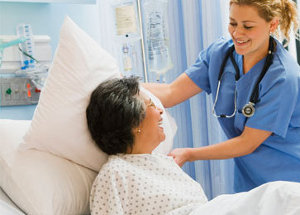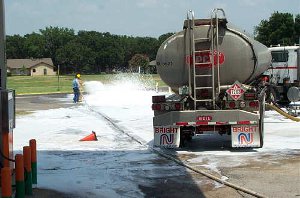 |
More patient involvement: How is patient safety effected?Det händer titt som tätt att patienter får uppmärksamma vårdpersonalen på att fel mediciner har lagts fram vid sängkanten… Patienter utgör m.a.o. en viktig barriär mot vårdmisstag. Det satsas stort i Sverige och inom EU på mer aktivt involverande av patienter i sin egen vård (s.k. patientcentrerad vård). Frågan är hur långt man kan gå i att aktivt involvera patienter och hur patienterna själva ser på sin möjlighet att delta i sin egen vård: Vad tycker patienterna bör göras, t.ex. i from av bättre information så att de kan vara med att fatta viktiga vårdbeslut och hur kan patienter stödjas och informeras om pågående behandling så att de lättare kan upptäcka möjliga vårdmisstag? Din uppgift är att intervjua patienter (via web-enkät) om vad de ser som viktiga åtgärder för en mer patientcentrerad vård, med särskilt fokus på möjliga åtgärder för att minska antalet vårdmisstag. In the future, patients will be more involved in their own healthcare, for example, writing diaries, editing their patient records, initiating contacts, give and get advice on the web, etc. With what kind of IT-systems could patients be supported? What system would the patients like to have? Is it technically/practically/economically possible to achieve? How would a more active patient involvment affect patient safety? |
|
 |
Risk awareness during crisisEmergency responses are high-risk operations where a lot of things can go wrong. Gas explosions can occur, by-standers can panic, emergency vehicles might collide with civil vehicles, and so on. Mindfulness refers to a mindset where one is constantly looking out for possible risks, and where one is trying to safeguard against possible risks. An interesting research question if one can train to be more mindful and if such training can affect individual risk taking, in the short- and long-run. |
|
 |
Naturalistic decision makingIn emergency situations people do not have time to fully evaluate all possible actions. Instead, they perceive the situation as a whole and use their recognition of the situation and their "gut-feelings" about the situation to choose an appropriate action, what is called Recognition Primed Decision (RPD). Key steps in RPD are 1. correct recognition of the situation and 2. correct evaluation of the consequences of the chosen action. Your task is to survey the litterature and sketch/design a way to support RPD. |
|
 |
Simulator experiment for studying fast drivingYour task is here to study road scene scanning patterns during simulated fast driving with emergency vehicles. You will record eye movements, as well as closeness to obstacles, closeness to other vehicles to asses how risky the experimental participants drive. The aim is to study the relationship between how the road scene is scanned and how risky the participants drive. |
Page responsible: Rita Kovordányi
Last updated: 2011-12-07

